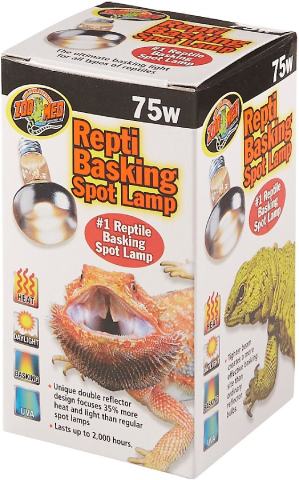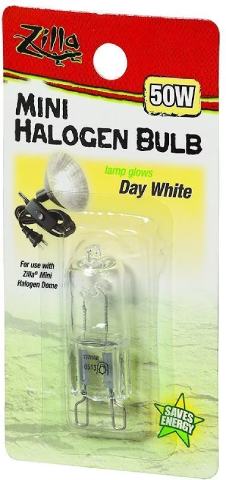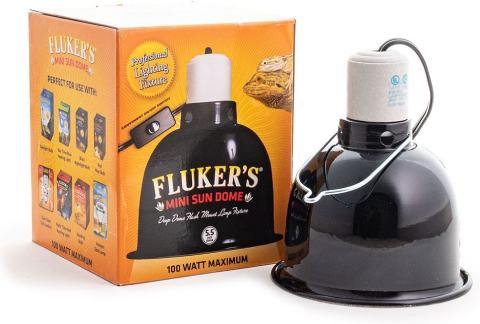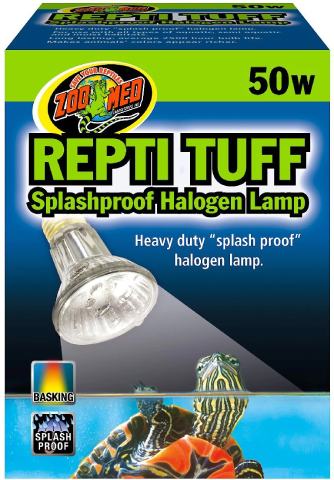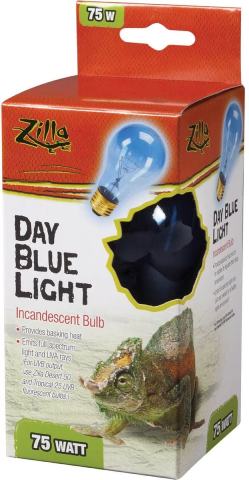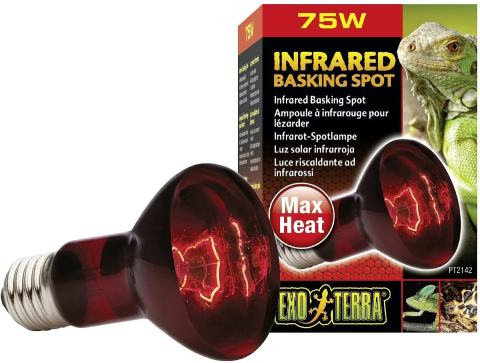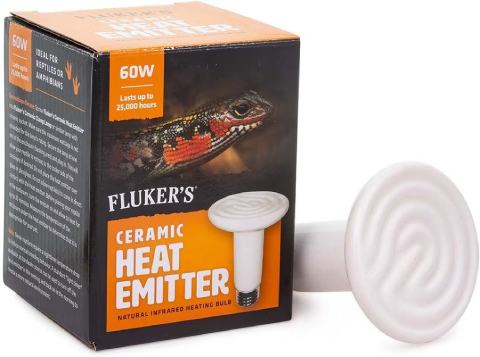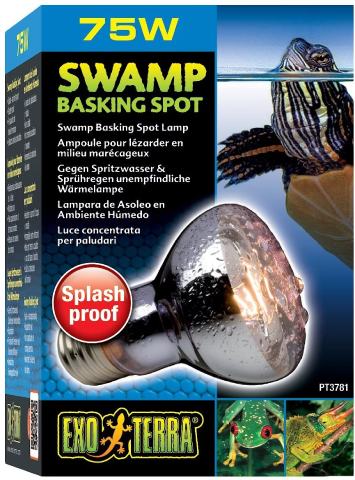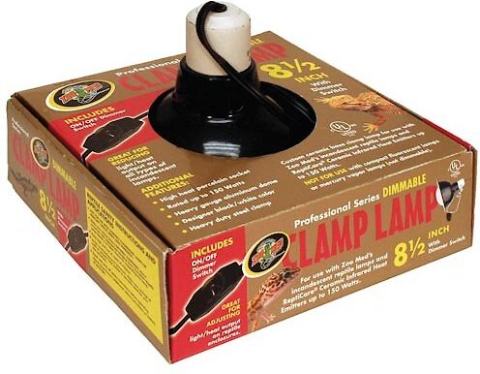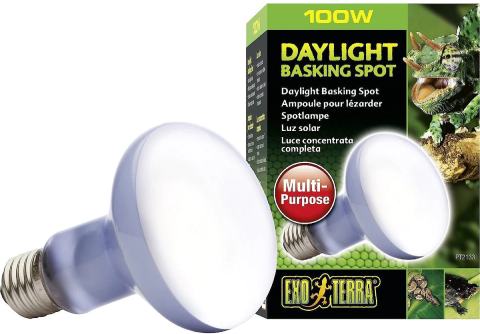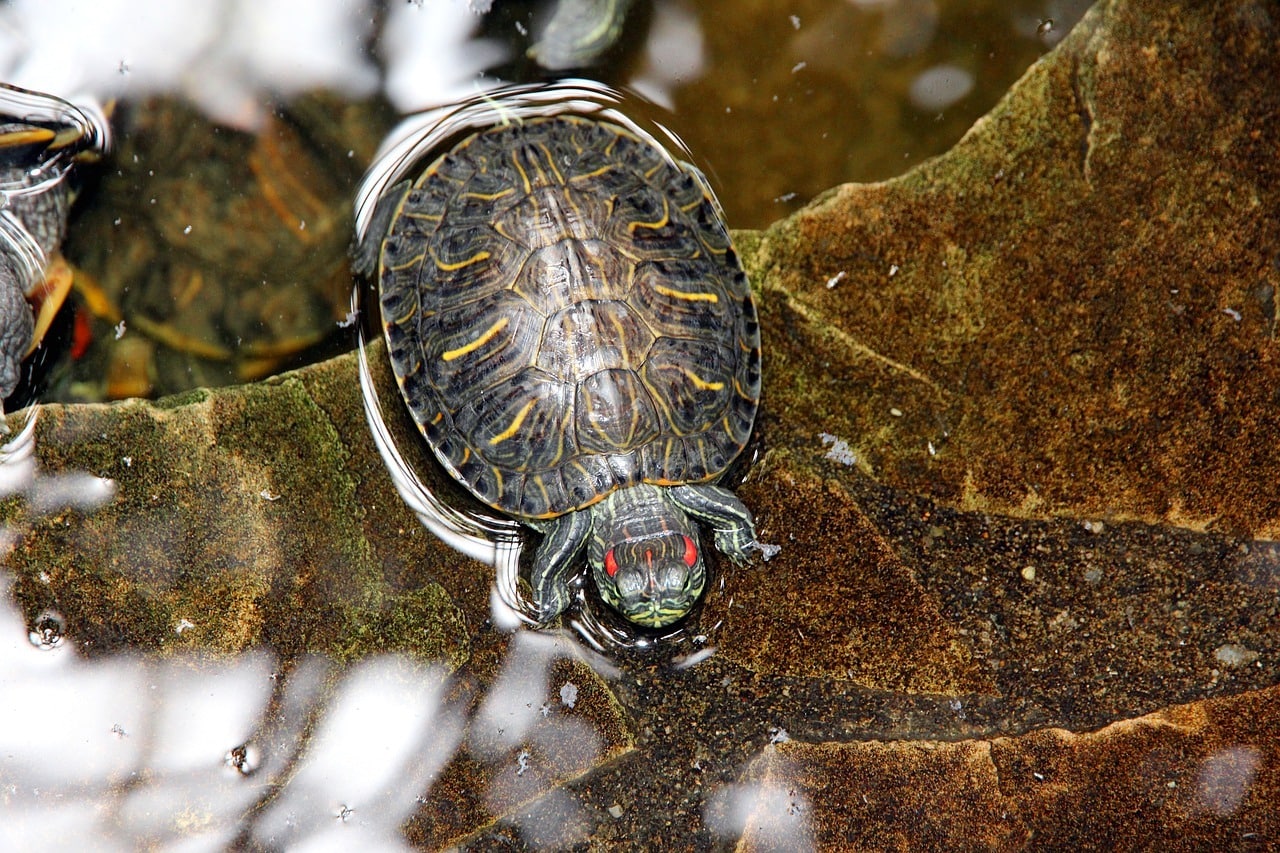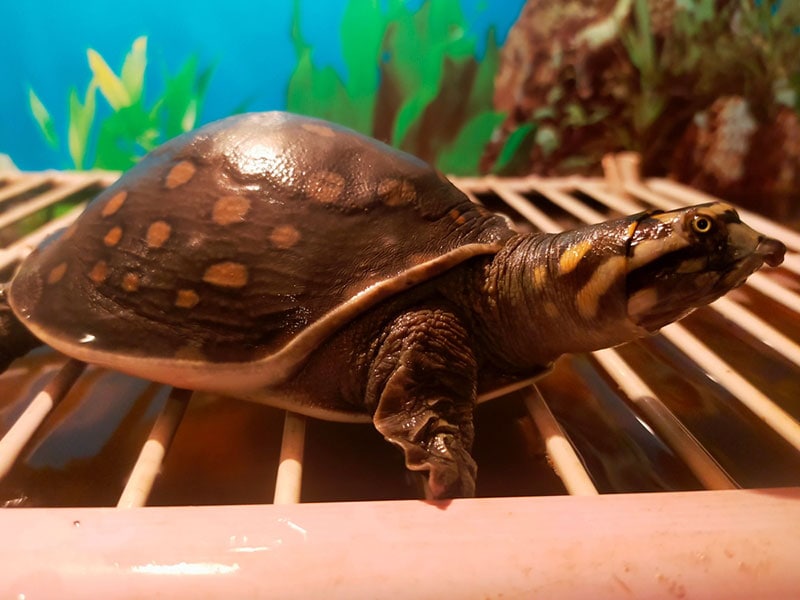
Turtles, like all reptiles, are cold-blooded, which means they are unable to regulate their own body temperature and require some form of a heat lamp or basking light to maintain their body temperature. It is common practice to have a gradient of heat with one end of the tank being cool and the other being around 88°F—offering a basking area.
Turtles also need UVA and UVB light, which they would receive when basking in the sun’s rays, and these can be offered via a basking light that emits UV. Most enclosures come with at least one light fitting in the lid, which means you only need to find an appropriate lamp or bulb, but if this isn’t the case you will also need a light fixture. Buying a separate light fixture may also be necessary if you want to install a heat lamp at the side of a tank.
Below are reviews of 10 of the best basking lights and heat lamps for turtles, as well as a guide on selecting the one that best meets your turtle’s needs.
A Quick Comparison of Our Favorites in 2024
| Image | Product | Details | ||
|---|---|---|---|---|
| Best Overall |

|
Zoo Med Repti Basking Reptile Spot Lamp |
|
Check Price |
| Best Value |

|
Zilla Mini Day White Halogen Bulb for Reptile Terrariums |
|
Check Price |

|
Fluker’s Mini Sun Dome Lighting Fixture |
|
Check Price | |

|
Zoo Med Repti Tuff Splashproof Halogen Reptile Terrarium Lamp |
|
Check Price | |

|
Zilla Day Blue Light Incandescent Reptile Bulb |
|
Check Price |
The 10 Best Basking Lights & Heat Lamps for Turtles
1. Zoo Med Repti Basking Reptile Spot Lamp – Best Overall
| Light Type: | UVA Light |
| Light Color | White |
| Includes Fitting: | No |
In the wild, turtles bask in the sun. As well as increasing their body temperature and keeping them warm, this also provides UV light. UVA specifically helps maintain energy levels and is also important to breeding.
The Zoo Med Repti Basking Reptile Spot Lamp is a 75-watt spot lamp that produces ambient heat to raise the temperature of the surrounding area and also directs heat and UVA light toward a basking area. You will need to provide additional UVB because it is essential for turtles and this lamp only provides UVA, and you need an existing lamp holder. However, the bulbs are designed to be long-lasting and produce white light that is similar to the light that turtles would receive in the wild.
It is reasonably priced, benefits from a double-reflector design to target a basking area, and the manufacturer claims that each bulb will last around 2,000 hours before it needs replacing, making it the best overall basking light & heat lamp for turtles. However, there are reports that some of the bulbs don’t last as long as intended, although this may be due to different setups and different lamp fittings being used.
2. Zilla Mini Day White Halogen Bulb for Reptile Terrariums – Best Value
| Light Type: | Halogen Heat Bulb |
| Light Color | White |
| Includes Fitting: | No |
The Zilla Mini Day White Halogen Bulb for Reptile Terrariums is a basic halogen bulb that is designed for use in the Mini Dome, Heat & UVB Basking Fixture, and the Mini Heat & UVB Fixtures from Zilla. Although it is only a 25-watt bulb, because halogen is more efficient and more powerful than incandescent, it is the equivalent of a 50 to 75-watt bulb, which should be enough to meet the heating requirements of most turtle species and enclosures. It is small, which means it takes up minimal space, but it can provide heat up to 90°F, although that does depend on the placement of the fitting.
Zilla claims that the bulbs last around 1,000 hours, which is less than is claimed by manufacturers of other bulbs, but the Zilla mini halogen bulbs are really inexpensive, and they should provide ample heating for turtles. You will need an additional source of UVA and UVB, however, as these bulbs are not rated to provide either.
3. Fluker’s Mini Sun Dome Lighting Fixture
| Light Type: | Dome |
| Light Color | NA |
| Includes Fitting: | Yes |
Fluker’s Mini Sun Dome Lighting Fixture is a fixture, rather than the bulb itself, and doesn’t include a bulb. It comes in two sizes, with the 5.5-inch fixture taking bulbs up to 100 watts and being ideal for most turtle setups. If the fitting will be placed a long way above the basking spot or enclosure floor, the 8.5-inch model will take up to 160-watt bulbs.
It comes with a 6-foot power cord and a power switch, and has an aluminum interior that reflects UV light, directing it towards the targeted area. You will need to buy a bulb to go with the fitting, but it is reasonably priced and designed so that it is easy to install in most setups. It has a spring-loaded clamp to make it easy to fit to the top of most enclosures.
4. Zoo Med Repti Tuff Splashproof Halogen Reptile Terrarium Lamp
| Light Type: | Halogen |
| Light Color | White |
| Includes Fitting: | No |
The Zoo Med Repti Tuff Splashproof Halogen Reptile Terrarium Lamp is a 50-watt halogen lamp that is especially useful for aquatic turtles because it is splashproof, which means that your turtle won’t cause damage by splashing around in its water. It reaches approximately 90°F when placed 8 inches above the surface, which should be ample as a basking lamp. It does produce a little UVA but doesn’t produce UVB. Both are considered important, but it is UVB that reptiles use to synthesize calcium, so you will need a separate UVB lamp.
The halogen lamp doesn’t burn out quickly, making it a solid investment, and 50 watts is considered suitable for turtles, but it is a little on the expensive side in terms of its initial price. Halogen bulbs are more efficient than incandescent bulbs, so one will save you money on electricity bills, however, and they last well without burning out too soon, even if they do get splashed. They can work out cheaper than incandescent alternatives, in the long run.
5. Zilla Day Blue Light Incandescent Reptile Bulb
| Light Type: | Incandescent |
| Light Color | Blue |
| Includes Fitting: | No |
The Zilla Day Blue Light Incandescent Reptile Bulb is a 75-watt day bulb but rather than producing bright white light, it has a warmer blue color. It produces full-spectrum light, including UVA, but doesn’t offer UVB. The 75-watt bulb will produce adequate heating for your turtle terrarium and Zilla claims that the bulbs only need replacing roughly every 3,500 hours of use, which means that it should last between 9 and 12 months depending on how often you leave the bulb on.
The bulbs are reasonably priced but they seem to blow out much sooner than the advertised 3,500 hours so they will need replacing more often.
6. Exo Terra Infrared Basking Reptile Spot Lamp
| Light Type: | Infrared |
| Light Color | Infrared |
| Includes Fitting: | No |
Infrared heat lamps do not produce bright light in the same way that other basking lamps do. This means that they can be used throughout the day and night to provide warmth without disrupting sleeping patterns. In most cases, turtles do not need extra heat at night, but if your terrarium is kept in a location that does get cold at night or you need to provide additional warmth because your setup doesn’t get hot enough during the day, one could prove beneficial.
Make sure you don’t have an infrared and a standard basking lamp running at the same time if this means that the temperature gets too hot, or it could cause injury to your turtle. The Exo Terra Infrared Basking Reptile Spot Lamp is an infrared bulb. The reddish light won’t prevent sleep and it can be especially useful for hatchlings that need the extra warmth exposure.
The lamp is a little more expensive than other basking lamps, however, and it won’t be necessary for most setups.
7. Fluker’s 60W Ceramic Reptile Heat Emitter
| Light Type: | Ceramic |
| Light Color | None |
| Includes Fitting: | No |
Ceramic heat emitters literally emit heat without the production of any light. This means that they are useful in setups where you have adequate UV lighting but need to add more heat, or for providing warmth at night when the tank needs to remain dark, but you will need to monitor and manage the temperature inside the enclosure to make sure it isn’t getting too hot.
Fluker’s Ceramic Reptile Heat Emitter is a 60-watt heat emitter that can be used with aquatic and terrestrial turtles, including tortoises, to provide warmth throughout the day and night. A ceramic heat emitter does need careful temperature management, however, or you may end up with a tank that is too hot. They are also more expensive than standard heat bulbs and are easy to break if you are too vigorous when handling the bulb.
8. Exo Terra Swamp Basking Splash Proof Reptile Spot Lamp
| Light Type: | UVA Basking Light |
| Light Color | White |
| Includes Fitting: | No |
Water splashes, and even high levels of humidity, really can cause major problems for basking lights if the water gets inside the fitting. Even if you keep the lamp inches above the water, there is still a risk especially when housing an aquatic turtle.
The Exo Terra Swamp Basking Splash Proof Reptile Spot Lamp is a 75-watt basking lamp that provides UVA and has a splashproof design that ensures safe use even in an aquatic enclosure. The lamp should last around 3,000 hours, which means it won’t need replacing for up to 8 months, even if you run it for 12 hours a day every day. However, it is expensive and despite claims it will last 3,000 hours, many of the bulbs have blown after a few months of use.
9. Zoo Med Professional Series Dimmable Clamp Reptile Lamp
| Light Type: | Dimmable Lamp |
| Light Color | NA |
| Includes Fitting: | Yes |
The Zoo Med Professional Series Dimmable Clamp Reptile Lamp is a lamp fitting, that doesn’t include any bulb, but that will take bulbs up to 150 watts. Most turtle enclosures only need a bulb between 50 and 100 watts, but the extra means that there is less chance of blowing new bulbs.
The lamp includes a dimmer switch, so it is possible to dim the power, although it is unlikely that you will regularly use the dimmer function, and if you get the right bulb and have a stable room temperature, you may not use the dimmer function at all. It is reasonably priced for a lamp fitting, and it does enable you to choose the bulb that best fits your turtle’s needs. In most cases, though, it is more powerful than needed and most owners won’t require a dimmable heat lamp. It does also have a metal clamp to secure it to the enclosure.
10. Exo Terra Daylight Basking Reptile Spot Lamp
| Light Type: | Daylight Spot Lamp |
| Light Color | White |
| Includes Fitting: | No |
The Exo Terra Daylight Basking Reptile Spot Lamp is a 100-watt daylight basking spot lamp. 100 watts is at the upper limit of what most turtle species and setups need, which means that you might need to place the lamp a little further above the enclosure to ensure you don’t burn your turtle when it’s basking.
The lamp produces UVA, but not UVB, and the spot lamp can be directed toward the basking area of your setup. It is a little pricey for a single bulb, which is because it is a 100-watt bulb, and you may want to opt for something a little less powerful and a little less money.
Buyer’s Guide: Choosing the Best Basking Lights & Heat Lamps for Turtles
Rather than living inside their shells, turtles’ shells are an extension of their ribs and form part of the animals’ skeletons. The turtle family includes tortoises and terrapins, although when we talk about pet turtles, we are usually referring to aquatic turtles.
Aquatic turtles live in water but come onto land to lay their eggs and at other times in their lives. They can make good pets, although they rarely enjoy being handled so they are better as observational pets rather than interactive ones. You will need to provide suitable accommodation for a pet turtle, which includes regularly cleaned water, as well as substrate, adequate lighting, and appropriate heating.

Do Turtles Need Basking Lamps?
Turtles are reptiles and reptiles are cold-blooded. Cold-blooded animals are unable to regulate their body temperatures themselves, which means they have to rely on warmth from the sun and their environment to stay warm. In the wild, they do this by moving to warmer spots and they can be seen basking in the sun on rocks and land. When kept in captivity, they rarely have access to the sun in the same way, so owners must replicate the sun and especially the heat and UV rays that it provides.
Basking lamps are used primarily to meet the heat requirements of turtles, although they can also provide some UVA light. As well as a basking lamp, you will likely need to provide a UVB light so that your turtle can absorb the UVB and use it to synthesize and absorb calcium, which ensures strong bones and shells.
Light Types
There are a few different types of basking lamps available.
Lamps vs Fittings
Many dedicated turtle enclosures and vivariums come with lamp fittings in the lid, as well as UV light fittings, which means owners only need to buy the lamp or bulb to put in the fitting. If this isn’t the case with your enclosure, it is possible to buy fittings that can be clamped on the lid or placed above a screen, depending on your setup and the strength of the light.
Daylight vs Nighttime Light
Most turtle species are diurnal, which means they are active during the day and rest at night. They may bury themselves in sand or sleep next to piles of rocks, where they are well camouflaged. They prefer to sleep in a dark environment, and because some sleep out in the open, they are equipped to deal with nighttime temperatures. As such, unless your turtle is kept somewhere where temperatures get low at night, you shouldn’t need to provide light or heat at night. However, nighttime lights are available for those that need them.
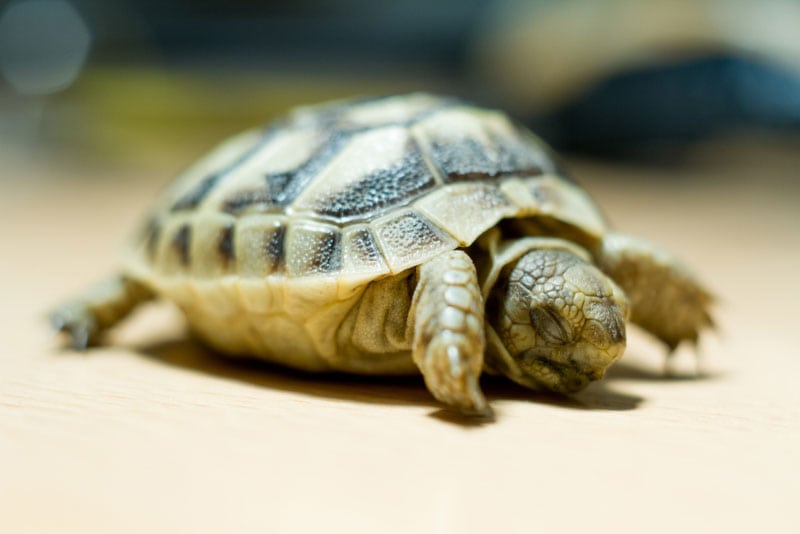
Heat Lamp Wattage Requirements
Turtles don’t need the same high temperatures as other pet lizards, but they do still need a basking area that reaches around 85°F, hence the need for basking lamps. Although it does depend on the distance between the lamp and the basking area, a turtle enclosure generally only needs a basking lamp between 50 and 100 watts. If you’re using a 150-watt bulb, it will mean moving the lamp so far away that it will bathe the entire enclosure in heat, but turtles benefit from having cooler areas as well as hot areas. It is better to use a lower-wattage lamp to target a specific area of the tank.
Splashproof Lamps
Some lamps are marketed as being “splashproof.” This means that they have a casing or some other technique of preventing water splashes from getting into the bulb or the lamp fitting, therefore preventing the damage that water can cause to lights.
Although many turtles are aquatic, they don’t tend to splash too heavily, and because the lamp will be between 6 and 9 inches away from the water there isn’t a huge risk of water damage. Another reason to choose splashproof bulbs is that a very humid environment can also cause water damage, but turtles don’t need high humidity levels, either.
How Long Should a Basking Lamp Be Left On?
The aim of using a basking lamp is to replicate conditions that your turtle would experience in the wild, which means providing “daylight” for between 9 and 12 hours, most days. Invest in an automatic timer for your lights and lamps and set them to stay on during daylight hours and go off at night.
Can I Leave a Basking Light On Overnight?
Basking lamps should only really be left on for a maximum of 12 hours every 24 hours, to replicate the day/night cycle in the wild.
Conclusion
Turtles make fascinating pets and as an owner, you must try to replicate the conditions they would enjoy in the wild, including UV light and heat.
Above, you can find reviews of 10 of the best basking lights & heat lamps for turtles including the Zoo Med Repti Basking Reptile Spot Lamp which is an affordable 75-watt spot lamp, but it does tend to burn out and need replacing quite quickly. The Zilla Mini Day White Halogen Bulb for Reptile Terrariums is a small halogen bulb that produces the equivalent of a 50 to 75-watt traditional bulb and is inexpensive, but it won’t fit all lamp attachments and fittings.
Featured Image Credit: Raz Bayragy, Shutterstock





